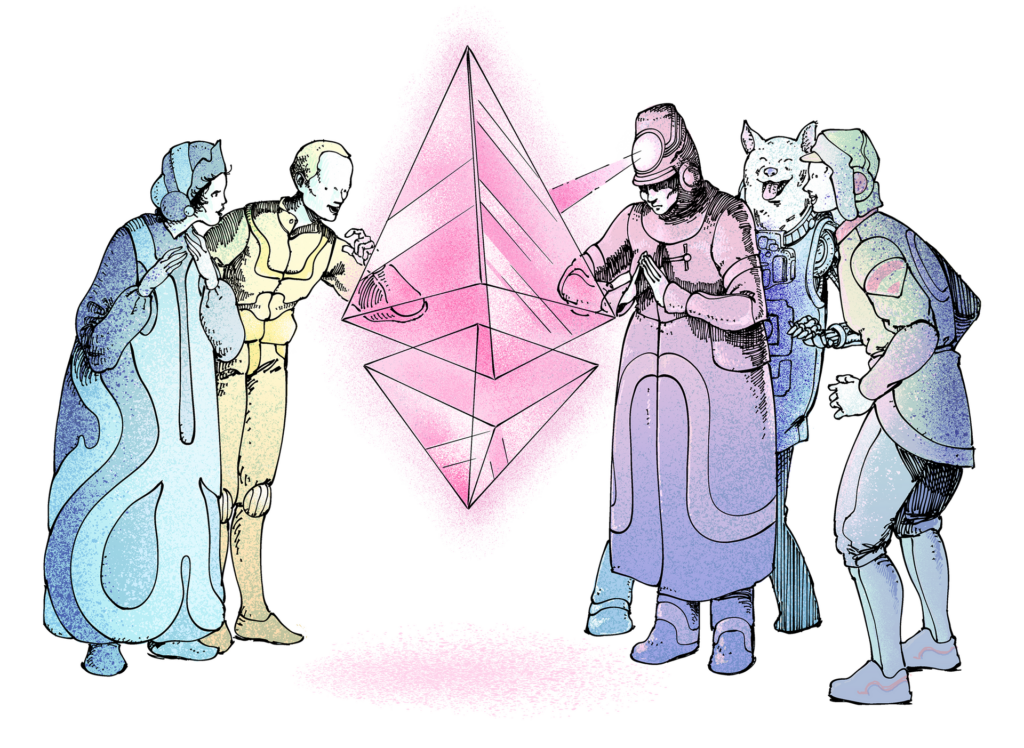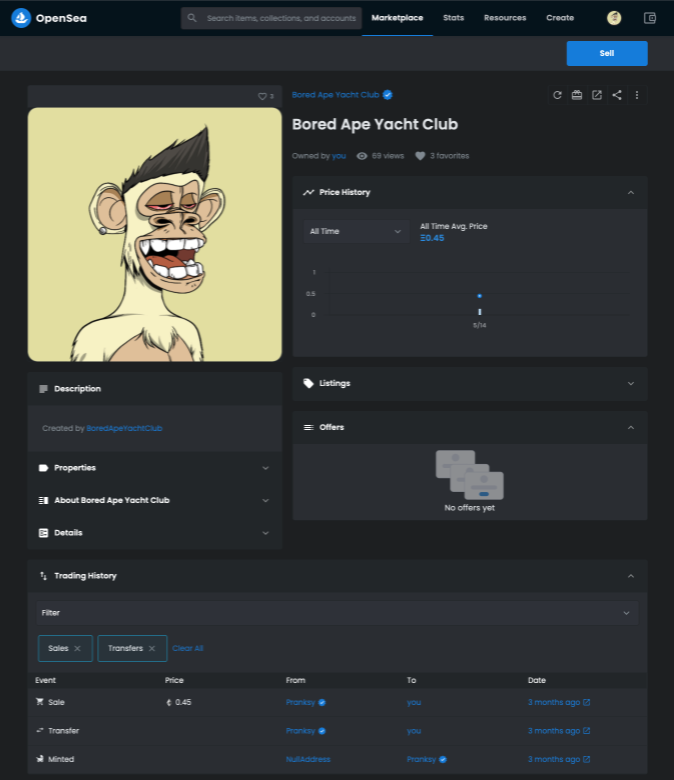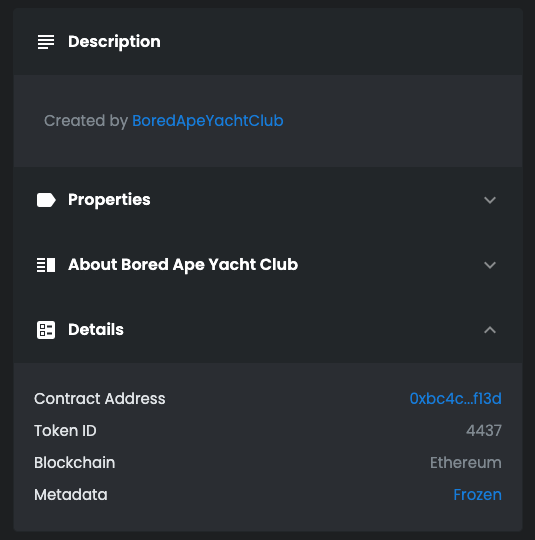- NFTs are powered by smart contracts
- NFTs are unique tokens that can represent ownership of specific digital items
- Owning your smart contract as an artist is essential
Non-Fungible Tokens (NFTs) have risen in popularity tremendously and a lot of artists out there are trying to utilize this blockchain-based technology in order to capitalize from it and get rewarded fairly for all of the work and effort that they put into their art.
However, knowing how to fully own the smart contract that connects your NFT to you is an essential part of this, as it provides proof of ownership or a way through which the specific NFT token can be traced back to you as an artist. In some cases, that connection between you and your smart contract will provide you with passive royalty income each time that NFT gets re-sold to someone else on secondary markets like OpenSea.
This is why it is essential that every artist knows what they are getting themselves into, and today we will be taking a deep dive into how shared contracts work, and why it is important to own your smart contract and NFT as an artist. Let’s dive in.
What Is a Smart Contract?
Smart contracts can be defined as programs that are stored on a blockchain and run when specific, predetermined conditions are met. They are automatically executed and typically used to automate the execution of an agreement where all participants can be certain of the outcome. This is all done without any involvement from a third party which in turn allows for it to be completed without any delays.
To further explain them, they follow simple statements such as if/when = then, which are written into the code itself on the blockchain. The network of computers then executes the actions when predetermined conditions have been met and then verified.
In these smart contracts, there can be many stipulations that are required in order to comply with the requirements of the participants and that will allow the task to be completed. To satisfy this need, the participants need to establish the terms and determine how transactions and their data are represented on the blockchain, or set specific rules that govern the transactions and explore many possibilities when it comes to the execution while determining a framework for resolving any further disputes.
These are typically created by a developer, and organizations provide simplified tools that can enable smart contract structuring as well.
NFT aka Non-Fungible Token
NFT stands for Non-Fungible Token and it is a type of digital token that is unique as well as scarce. An NFT is a unique proof-of-ownership of something, typically in the form of a digital asset such as an artwork or a song. Note that it can also be a digital version of a physical item, where no two NFTs are ever the same.
Then there is a blockchain oracle, which is a third-party service that is trusted and provides smart contracts with authenticated external sources of data from the real world through the usage of an API.
They can essentially connect smart contracts with events in the outside world and would typically need to be triggered by an outside event.
NFTs can be embedded within smart contracts, and a smart contract has the ability to own an NFT, which can then be transferred from one user to another user based on the specific rules or events that have been pre-defined in the smart contract itself.
These smart contracts can be embedded within a non-fungible token (NFT) with the intention of calling and accessing assets within the NFT itself. A user can access a digital artwork or song that is embedded within an NFT through a smart contract, where they would agree on the terms through the smart contract and pay for the agreed amount of cryptocurrency, where after all of these conditions have been met, they could view the artwork or listen to the specific song.
In other words, you need to have a smart contract that has predefined conditions which need to be met for you to be able to sell your NFT, and you can write data onto it that can give you cryptocurrency each time it is re-sold as well, as that would be a part of the agreement of that NFT.
What Is a Shared Smart Contract?
Shared smart contract NFTs are the ones you post to or share on digital marketplaces such as OpenSea or Foundation. Here is the link to their shared smart contracts. You can see that this token host all the work created on this platform and it is shared under this one contract.
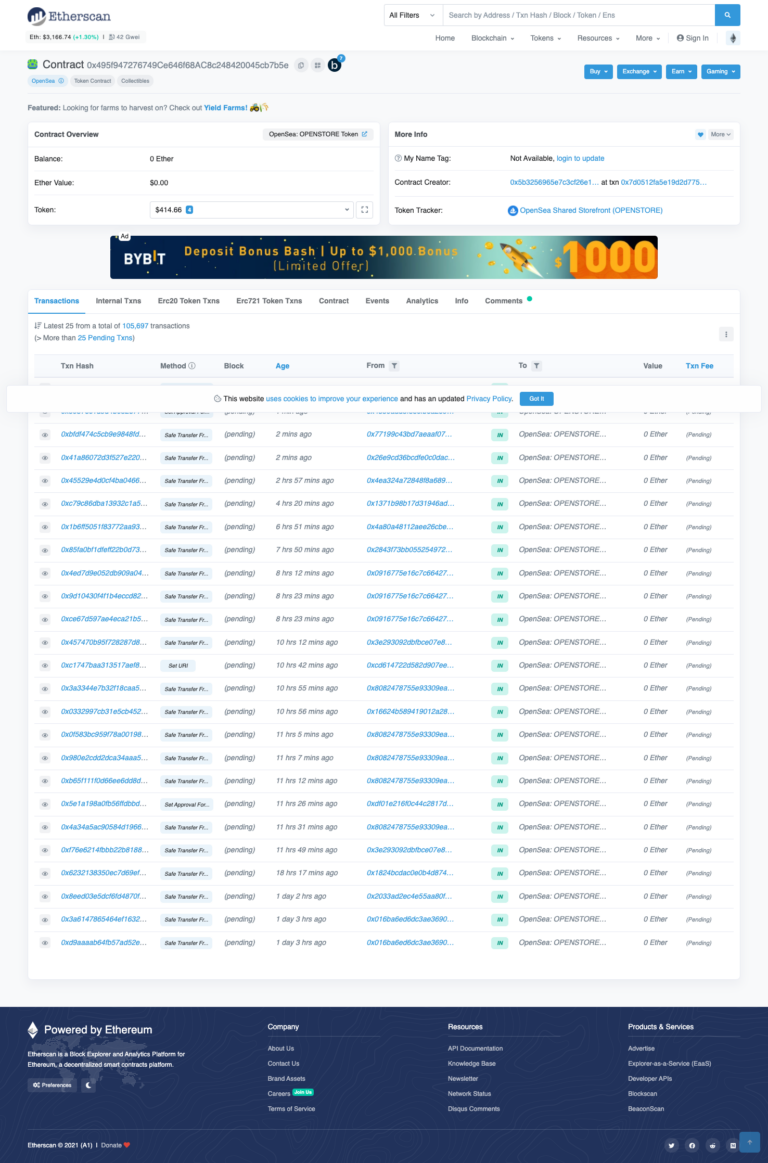
OpenSea is a peer-to-peer marketplace for NFTs, rare digital items, and cryptocurrency collectibles, while Foundation is an application that facilitates live auctions for NFTs where users can bid on digital artwork by NFT artists using Ethereum (ETH) or Polygon (MATIC).
Smart Contracts and NFTs in Etherscan
Alongside seeing the NFTs on the website itself, you can check for their authenticity and origin on Etherscan.
Etherscan is a useful tool if you want to explore the Ethereum blockchain as well as the NFTs within it. You can search your wallet address to see your token balance, or even enter a transaction hash and verify the traction history of a specific digital token.
You can even connect your Metamask wallet in Etherscan and mint from smart contracts directly.
Keep in mind that transactions such as NFT sales can be viewed under the “Internal Txns” tab on the Etherscan account page. Note that the transaction records will typically have OpenSea’s 2.5% fee and project royalties for the digital artists if there are any, automatically deducted, and crypto-wallets such as MetaMask will typically not display any internal transactions.
Furthermore, if you have sold an NFT through an auction, for example, you could add WETH as a token in your MetaMask crypto wallet to view it there.
However, OpenSea streamlines this further.
Let’s assume you find an NFT you like on OpenSea, and you click on it.
Scroll down a bit, and find the Details tab.
Here, you can click on the Contact Address, which will take you to Etherscan directly.
Here you will have all of the historical data about the NFT, including its creator. This is how you check which token it is.
Here you will have all of the historical data about the NFT, including its creator. This is how you check which token it is.
Exploring Etherscan For More Information on Your Smart Contract
On the Etherscan menu, you will notice a lot of information.
Initially, you will be able to review its value, who the creator is, at what txt hash it is, and who the tracker is.
As you dig in further, you will be able to view the following information:
- Tnx Hash – this is a unique identifier that is generated whenever a transaction is performed and can be used to track and trace the status of a transaction
- Method – This is the function executed based on the decoded input data, if there are unidentified functions, you will see method ID displayed instead here.
- Block – at what block the transaction occurred
- Age – the age of the traction
- From – from what txt hash it was transferred
When you go to the contract tab, you will be able to see the contract name and see if your existing NFTs are on a shared contract or a custom contract.
NiftyKit Customization Options for Smart Contracts
NiftyKit helps you mint as well as sell your NFTs. As an owner of a custom collection as well as the creator, you can set your own commission rates when you sell on NiftyKit, but it’s not just limited here, you will also be able to control the settings that each secondary marketplace will help you change as-well.
On the NiftyKit Storefront, you can even create your custom smart contract. This can be either on the Ethereum Mainnet or on Polygon.
To create your custom smart contract you will configure these fields:
- You will need to upload an image to represent your custom collection
- You will need to upload a banner to show and promote what your collection is about
- The Collection Name is set as the official name of your collection once your smart contract has been created. Keep in mind that you cannot change this once it has been created on the blockchain.
- The Collection Symbol is similar to a stock ticker symbol for your collection. This cannot be changed once the Smart Contract has been minted.
- You will need to add a description with the intention of letting everyone know what your collection is about.
The NiftyKit smart contract is an ERC721 extension for OpenZeppelin framework and contains all types that you need to develop your own NFT tokens. The framework uses top-level standard contracts security patterns as well as best practices.
When NiftyKit creates your smart contract, we deploy it to the mainnet or to Polygon, and during the creation, we assign you as the owner of it based on the MetaMask wallet that is connected at the time of confirming the minting. During the creation, we assign ourselves as your minting agent, and this will allow us to help you manage your smart contracts on the NiftyKit platform and build your custom-branded NFT collection.
Once someone purchases your NFT, you will instantly receive the ETH in your wallet and the buyer will receive the NFT within the same transaction, and all of these rules are pre-defined in the NFT smart contract.
In fact, they can be created in multiple ways. You can list your NFT for a price and invite collectors to the storefront where you can sell your creations. Buyers that end up purchasing your NFT on NiftyKit with MetaMask will pay gas fees to purchase your NFT and when the transaction is made, you will end up receiving the funds directly in your wallet.
when a visitor makes an offer to purchase, they can connect their MetaMask to NiftyKit to submit their bid, and they can pay gas to submit their offer to you. You can place your NFT on an auction for 24, 36 or, 72 hours. The Auction will not start until a bid is equal to or greater than the set price. You are not required to accept these bids. You will get paid to your wallet account and the buyer will get your NFT instantly.
They have the ability to pay using a credit card through fiat currencies as well as the NFTs token type on Polygon or Ethereum. This means that you will not need to guess and list prices if you want to see what the true market price for your piece is. This is yet another way through which the smart contracts can be coded by the platform itself.
Another key aspect about NiftyKit is the fact that you have the opportunity to mint directly into your existing wallet through using MetaMask, where you can easily get to your OpenSea account and list it using some of their selling features as-well.
Note that NiftyKit does not support secondary sales natively on the website, and only supports primary sales. However, you can set your secondary sale fee since you are the owner of the smart contract through the MetaMask address you connected to when you made it on the NiftyKit platform. You can do this by going to the collection editor and adjusting the “Percentage Fee” field under the Royalty section. Here you can verify the payout address where you would like to receive the fees. You can learn more about this at OpenSea.
Keep in mind though that NiftyKit will create your smart contract and assign ownership of that contract to your MetaMask wallet. You will be able to fully control it afterward.
What Happens if NiftyKit Goes Away Forever?
Even if NiftyKit was to somehow go away, you will always retain ownership and control over any smart contracts or NFTs that were minted while your NiftyKit Subscription was active or while the service and platform were live.
Here is what will happen.
After you cancel your paid subscription, or after the NiftyKit platform goes away, you will not be able to mint or create any new smart contracts on the NiftyKit platform until you either reactivate your account or the NiftyKit platform removes its membership program, is down,or goes out of business.
When you create a collection of NFT on the NiftyKit platform itself, you own the smart contract along with all of the NFTs that were minted under that token ID
When you end up connecting to other platforms with your wallet that owns your custom collection, such as your MetaMask wallet, you will be able to manage your secondary sales and profile settings for the secondary marketplaces.
One thing to keep in mind: OpenSea manages its collections at their application level. After you set up your smart contract by following these instructions, it will look like you can add to that custom smart contract. You can click through and create it so that the NFT mints into the same custom collection created on NiftyKit, but instead of using your custom smart contract, it uses their OPENSEASHARED storefront smart contract, so it will not be part of your owned smart contract.
If you want to cancel your subscription with NiftyKit, you can do so under the “My Account” page, where you need to click on “Change Plan” within your NiftyKit account. Furthermore, you have the ability to delete the account altogether and you can do so by sending an email to support@niftykit.com.
If you cancel your membership, or if NiftyKit goes away, anything you have already minted remains owned by you and will not be burned. The platform itself only allows you to access tools that give you the ability to mint, but you can always access your NFTs elsewhere.
Owning your smart contracts is important, as even though many platforms such as NiftyKit are stable and live, and this will be the case for the foreseeable future as well, having full control and access to your NFTs is essential, so that even decades later if the platforms end up going away, you will always retain ownership of your digital artworks.
You can even build experiences with that specific smart contract later on throughout its lifetime by finding developers that can utilize your smart contract and build a next-level experience through it.
Learn More Here
NiftyKit Partnerships 2023
NFTs and Smart Contracts are constantly evolving and expanding, and we at NiftyKit are dedicated to providing Creators, Artists, Businesses, and Brands with the best
Rally Partners With NiftyKit To Launch The Future Is History
NFTs aren’t dead, but projects based on stupid pictures are. In 2021, Rally worked with designer Keenan Wells, better known Pixel Hall of Fame, on
Controlling NFT Royalties in Your Own Smart Contract
NFT royalties or Creator fees are a core value proposition of NFTs, but they’re also a touchy subject. As the debate surrounding NFT royalties rages
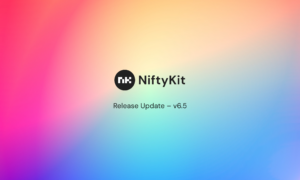
NiftyKit Updates v6.5 Now Live with Marketplace Controls & Team Pass for Collabs on Drops
Here’s the complete list of updates included in NiftyKit v6.5: 🚧 Marketplace Sales Controls: Locking NFTs on specific marketplaces so they cannot be transferred or traded

NFT Project Spotlight: Women in Web3
It’s Breast Cancer Awareness Month. As we celebrate all the amazing efforts and progresses to raise awareness to breast cancer, we are also extending this

Bringing Retro Back: Super Space Monkey World Are A Collectors Best Friend!
Acclaimed American graffiti artists Dalek & Diego Bergia link up to reimagine the vivid Space Monkeys with their latest drop powered by NiftyKit DropKit! Spaced
